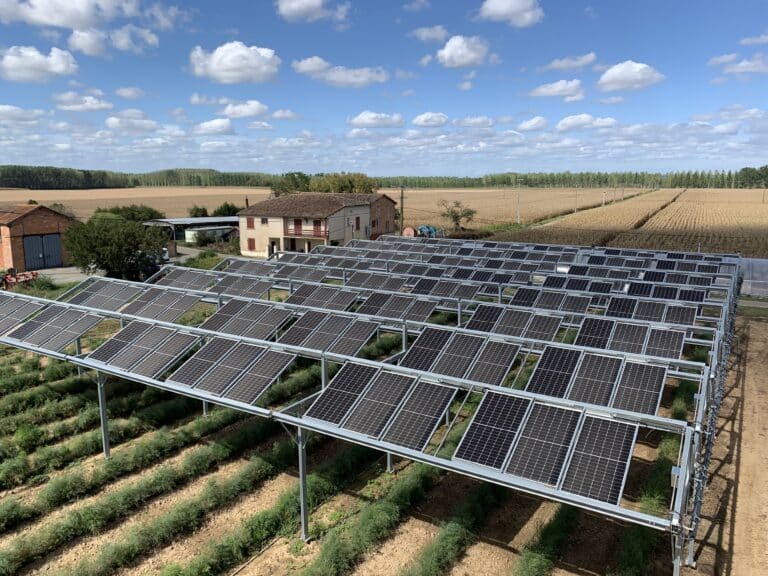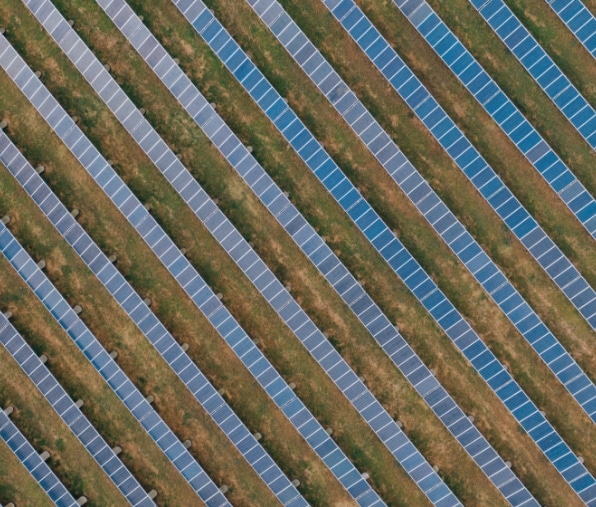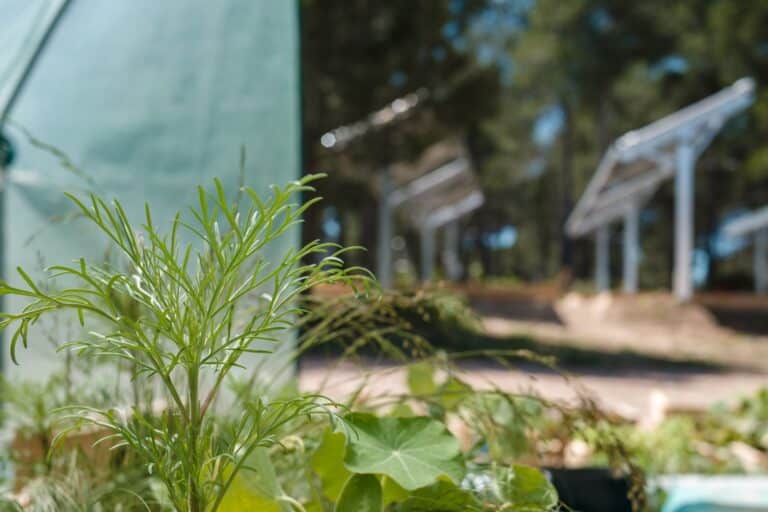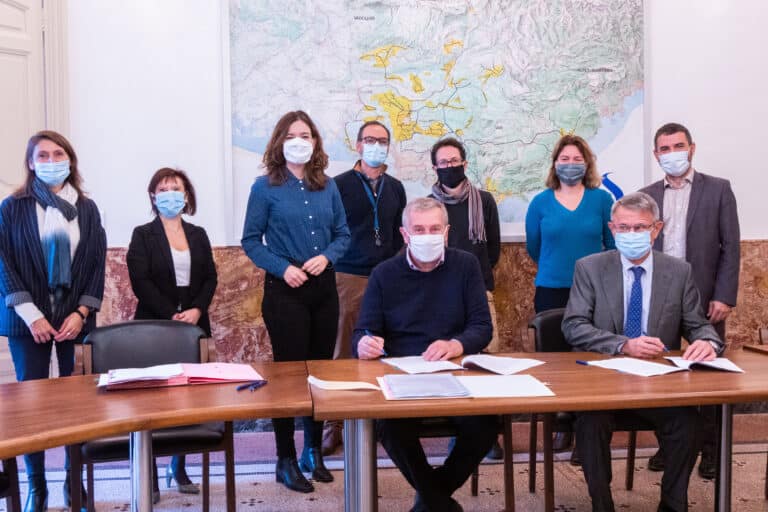All the sensors sensors installed on our sites enable us to to monitor, precisely and in real time, the phenomena happening onagrivoltaic sites. Lhe Research & Development d'Ombrea defines the sensors à to be placed and their location. The aim of this : to build and consolidate our expertise on the effects of microclimate on plants, mainly through climatic and agronomic monitoring of our demonstrator sites (a dozen to date, all over France). throughout France). This expertise is then valorized, with the digital teams within our internal toolss that enable the development of agrivoltaic projects projects.arable farmers and local communities.
Microclimate: what are we talking about?
The microclimateThe microclimate is the set of meteorological conditions on the scale of a very small area, significantly different from the regional climate because they are influenced by local topographical, hydric and geological features. The microclimate can have different effects on plants and animals, demonstrating negative or positive effects depending on its variation with the regional climate.
Thanks to our sensors, we are able to accurately observe our agrivoltaic sites sites and analyzing the climatic data collected in real time on site, we can highlight the beneficial effects of our solutions for plants and animals.
Agro-climatic sensors to measure the impact of our solutions
What are these sensors used for?
On all our sites agrivoltaïqueswe monitor concomitantly the microclimate on a control area and on the area equipped withshaded area. Air temperature and humidity, soil temperature and humidity, wind speed and direction, rainfall, light radiation measured by PAR which is photo-synthetically active radiation (or otherment light used for photosynthesis), everything is tracked. These data are compared with agronomic analyses carried out by technical and scientific institutes specializing in the study's agricultural production.s. The aim is toevaluate the effects of microclimate on crop development and harvesting (yield, quality).
For experimental purposes, and to better understand the effects of shading on the microclimate and on crops sensors sensors are installed at certain sites. We are currently testing a sensor to observe temperature variations under and outside the shade during frost episodes.
A constantly evolving sensor suite
Ombrea's teams are working to continuously improve this suite of sensors to ultimately identify and implement new sensors increasingly relevant sensors. We will also be able to deploy on certain types of crops sensors directly on the plant to monitor it in real time.
- The sensor sap flow sensor enables precise real-time measurement of plant transpiration and assessment of its water status.
- The dendrometer measures radial growth (trunk width) in real time and identifies periods of stress.
Finally, plant monitoring can also be carried out using imaging solutions. soon developed and tested on some of our agrivoltaic sites with a view to installing them on future plots. :
- RGB (Red, Green, Blue) imaging: thanks to algorithms developed in-house, this camera looking into the visible spectrum will enable key characteristics (stress, growth, etc.) to be observed and assessed in real time.
- NDVI imaging: this camera looks into the near infrared to assess stress more accurately.
Convincing results on agrivoltaic sites
We have found that our agrivoltaic solutions solutions help to reduce high temperatures, thus limiting the amount of time crops or animals are exposed to dangerous temperatures. For example, on our arboricultural site in Apt, during 5 days of heatwave in August 2023, the crops under the shade were protected from dangerous temperatures, above 35°C, for around 15h longer than without the shade.
In the soil compartment, we observed a reduction in temperature at various depths, -3°C at 55 cm depth during the heatwave of August 2023 in arboriculture at our Apt site. This has a significant impact on soil moisture levels. Water savings of up to 30% can be observed on our irrigated horticultural site in La Crau, averaging 21% between summer 2018 and the end of 2022.

For the vineyard and horticultural sites, agronomic analyses showed that yields and quality were improved or maintained. At Rians, for example, in comparison with the control zone, an increase in the acidity level of grapes from vats under shade was observed.. In horticulture, after 5 years of cultivation, peonies under shade are more developed, with a total number of stems (floral and vegetative) 45% higher than in the control modality. We are awaiting the results of our recent arboricultural site.
The next steps are to transpose this know-how to new farming systems, particularly in arable and livestock farming, to improve the prairie production system and, more generally, animal welfare.













